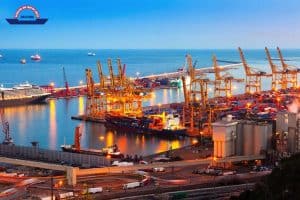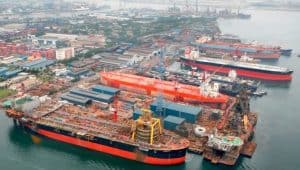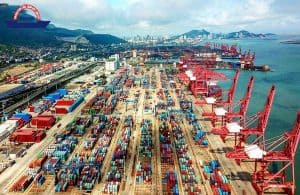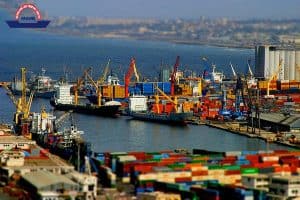Overview of the port logistics service model

Today, seaport services are an important clue and have a decisive role in improving the efficiency of the logistics process. The main goal of logistics seaport services is to focus on building port service areas to optimize logistics processes through improving port compatibility in the logistics chain. In this article, Navilink logistics experts will help you better understand information related to the port logistics service model.
The concept of port logistics services
According to documents from the International Logistics Administration. Port logistics is defined as follows: “Logistics is the process of planning, organizing, implementing and managing effectively the flow of capital to control the flow and storage of goods from raw material storage to perfecting the product as well as information related to this process from the first point of origin to the end of the consumer to satisfy customer requirements. ”

This completely means that logistics is a series of continuous, closely related activities, interacting with each other scientifically and systematically through research and planning steps. designation, organization, management, implementation, inspection, control and perfection. Therefore, logistics is the process that involves many different activities in the same organization, from building strategies to detailed and specific activities to implement the strategy.
For the transport industry, logistics includes all activities of planning, organizing the implementation of business services related to transport (sea, road, air, inland waterways, …), storing, arranging, packing, packing goods ready for the transport and distribution of goods to places as required by the trustee.

In the logistisc, the port holds an important clue in the logistics chain and therefore plays a decisive role in improving the efficiency of the logistics process. The goal of logistics seaport services is to focus on building port service systems to optimize logistics processes through enhancing port compatibility in the logistics chain. By using “upper” and “lower” output logistics limits, the participation of port services can create a significant share of the value-added chain of the logistics chain. If a port succeeds in developing logistics services, it will certainly have a competitive advantage over competing ports.
Port logistics service model
The normal seaport service system will be divided into 6 secondary systems, including
- Cruise assistance system.
- System serving ships to the port.
- Loading and unloading system.
- System for serving goods in transit.
- Storage system.
- Inland transport system.

In the port logistics process, these 6 systems will combine with the port information system as 7 groups to form the port logistics process. In this model, each system is closely linked with other systems depending on the flow of goods in the port logistics process.
1.Cruise support system
The mission of the cruise support system of the ship in the logistics seaport service. To provide food, food or other support services to the ship. In addition, there is an information system to support the ship’s journey such as a system to check the balance of goods on board before the ship leaves the port, check the ship’s balance, .
2. System serving ships entering ports:

The main role of a port service system is to ensure the safety and convenience of the vessel when it arrives at port. Companies, organizations of port services, services related to the service of ships entering ports including customs clearance services, pilot services, safety services for ships entering channels, shipping agents, … The cargo will go from the port service system to the loading and unloading system.

 English
English